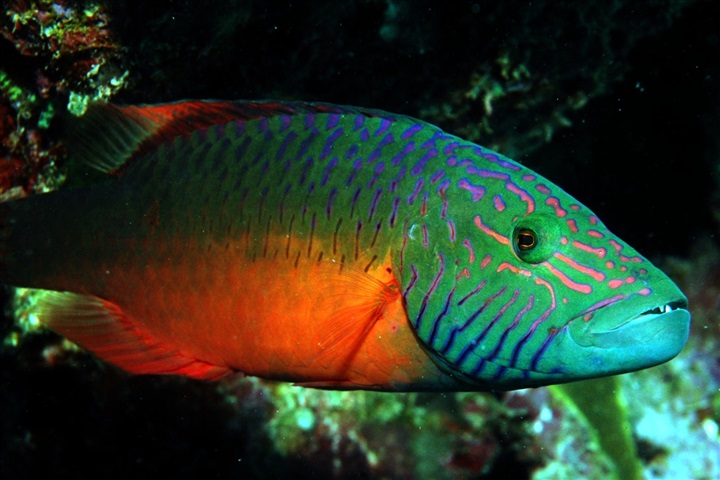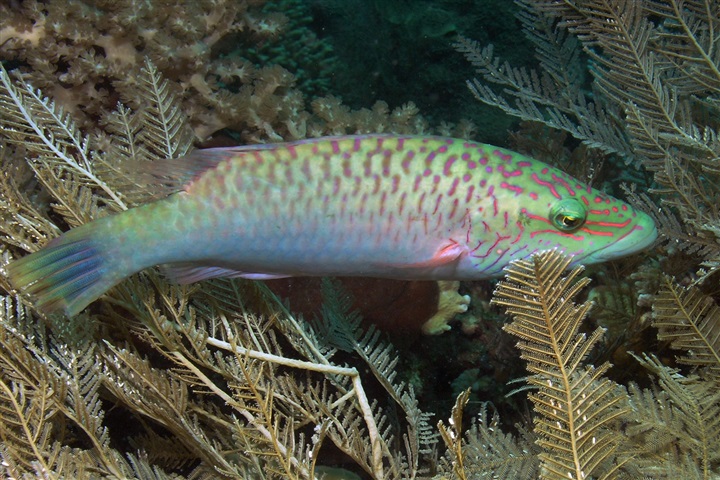Oxycheilinus digramma
| Latin name | Oxycheilinus digramma - (Lacepède, 1801) |
|---|---|
| Local name | Cheeklined wrasse |
| Family | Labridae - Oxycheilinus |
| Origin | East Indian Ocean, West Indian Ocean, Australia, Japan, The Red Sea, Indonesia, East Pacific, Central/West Pacific |
| Max length | 40 cm (15.7") |
| Minimum volume |
1500 l (396 gal) |
|---|---|
| Hardiness |
Average |
| Suitable for aquarium |
Suitable with care |
| Reef safe |
Reef safe with caution |
| Aggressiveness | Might be aggressive towards other species |
| Recommended |
Fish Larger crustaceans (Shrimp, crabs...) Other invertebrates Small crustaceans (Krill, mysis, artemia...) |
|---|
This spicies might be a threat to smaller fishes.
This species eats shrimps, crayfish, crabs, small bivalves, sea urchins, snails and similar.
This species needs a very large aquarium when fully grown.
Exactly how big the aquarium should be is hard to say, but the size of this species is such, that it cannot normally be kept in a home aquarium.
This species must be fed with an appropriately varied diet.
These fish flourish better without other members of the same species in the aquarium.
There is a greater chance of success with this species if one can supply a living feed to allow it to adapt to the tank.
This species has a habit of rearranging rocks and sand.
Make sure rocks are placed securely on the substrate, so they cannot toppled over.
These fish may well hide themselves for a while, whilst getting acclimatized.
Do not disturb the fish while acclimating because it will prolong the process.
This species often has a fun and interesting personality.
This species needs good hiding places, for example, between live rocks.
This species revels in swimming and requires an aquarium with ample space.
Wrasses are nearly always seen in reef aquaria, since many of the species are both attractive and useful in battling a range of unwanted invertebrates like i.e. flatworms, pyramide snails.
These fish live of everything from zooplankton to large crustaceans, sea urchins and the like.
The needs and behaviour of Wrasses vary greatly, so it is vital to familiarize oneself with the specific species before buying one.
| Aquarium trade | Yes |
|---|---|
| Distribution | Indo-Pacific: Red Sea and East Africa to the Marshall Islands and Samoa. |
| French common names |
Vielle barbe noire |
| German common names |
Wangenband-Lippfisch |
| English common names |
Violetline maori wrasse Bandcheek wrasse Cheeklined wrasse Cheek-lined Maori wrasse Cheeklined maori wrasse |
Bob Fenner. Maori/Splendour Wrasses, the Genera Oxycheilinus & (to): Cheilinus - Wet Web Media - (English)
Scott W. Michael. 2009. Wrasses and Parrotfishes (Reef Fishes Series Book 5) - TFH Publications / Microcosm Ltd. - (English)




